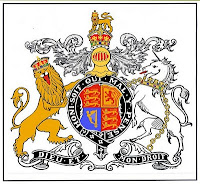More Four-Footed Friends, or Meet My Mastiff
Leslie’s post about Spaniels inspired me to talk a little about my own dog: Clancy. He’s a Mastiff (a reverse brindle, very beautiful and very sweet). I grew up with Newfoundl ands, Great Danes (aka Boar Hounds) and Irish Wolfhounds (all period breeds for my Georgian characters, though Wolfhounds and their cousins the Scottish Deerhounds were exceedingly rare during this period). I lucked into a copy of The Complete Dog-Fancier’s Companion; describing the Nature, Habits, Properties &c. of Sporting, Fancy, and other Dogs from 1819 a few years ago. It talks about various breeds, instructions for rearing, training, and basic care (the veterinary advice is quite frightening), and has an amazing rant about the evils of blood sports that ends with: For the sake of humanity, it is to be hoped, that the cruelty exercised on the animal, had- been repented of by his master, the greater brute of the two [emphasis in original] , and that there are none at present who could be guilty of a sim...







